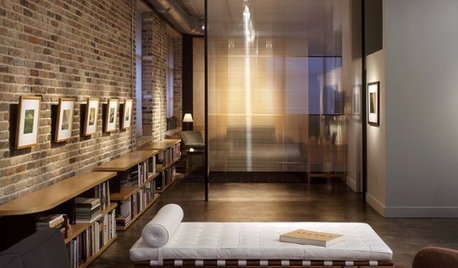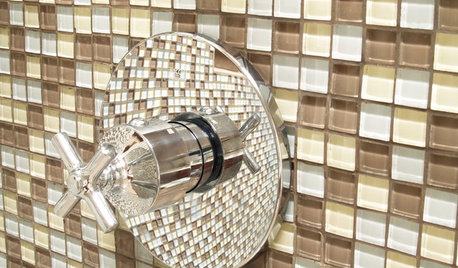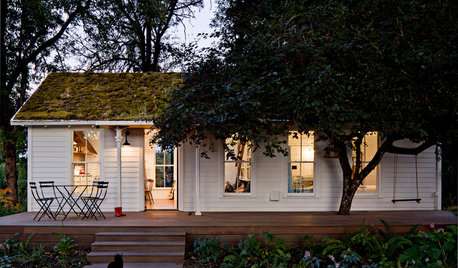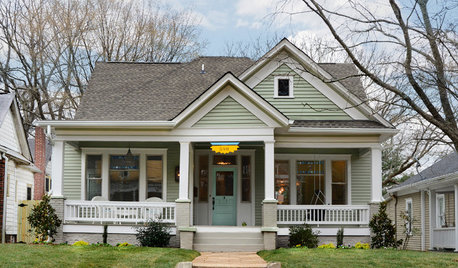HFGH Polycarbonate Panels Failing (Part 2)
mudhouse_gw
15 years ago
Related Stories

MATERIALSMaterials Workshop: Polycarbonate — a Low-Cost Alternative to Glass
Looking for something lighter, stronger and less expensive than glass? Multiwall polycarbonate may be a good option
Full Story
PAINTINGKnotty to Nice: Painted Wood Paneling Lightens a Room's Look
Children ran from the scary dark walls in this spare room, but white paint and new flooring put fears and style travesties to rest
Full Story
GREEN BUILDINGGoing Solar at Home: Solar Panel Basics
Save money on electricity and reduce your carbon footprint by installing photovoltaic panels. This guide will help you get started
Full Story
GREEN BUILDINGLet’s Clear Up Some Confusion About Solar Panels
Different panel types do different things. If you want solar energy for your home, get the basics here first
Full Story
BATHROOM DESIGNConvert Your Tub Space to a Shower — the Fixtures-Shopping Phase
Step 2 in swapping your tub for a sleek new shower: Determine your mechanical needs and buy quality fixtures
Full Story
SMALL HOMESHouzz Tour: A Family of 4 Unwinds in 540 Square Feet
An extraordinarily scaled-down home and garden for a couple and their 2 kids fosters sustainability and togetherness
Full Story
COLORPick-a-Paint Help: How to Quit Procrastinating on Color Choice
If you're up to your ears in paint chips but no further to pinning down a hue, our new 3-part series is for you
Full Story
CONTRACTOR TIPSBuilding Permits: 10 Critical Code Requirements for Every Project
In Part 3 of our series examining the building permit process, we highlight 10 code requirements you should never ignore
Full Story
CONTRACTOR TIPSBuilding Permits: What to Know About Green Building and Energy Codes
In Part 4 of our series examining the residential permit process, we review typical green building and energy code requirements
Full Story
HOUZZ TOURSHouzz Tour: Lovingly Resurrecting a Historic Queen Anne
Dedication and a keen eye turn a neglected eyesore into the jewel of its Atlanta neighborhood
Full StorySponsored
Central Ohio's Trusted Home Remodeler Specializing in Kitchens & Baths
More Discussions







laserfan
laserfan
Related Professionals
Parole Landscape Architects & Landscape Designers · Seabrook Landscape Architects & Landscape Designers · Bound Brook Landscape Contractors · Eustis Landscape Contractors · Indio Landscape Contractors · Lady Lake Landscape Contractors · Lehigh Acres Landscape Contractors · Petaluma Landscape Contractors · Sugar Hill Landscape Contractors · Beverly Hills Solar Energy Systems · Holliston Solar Energy Systems · Old Saybrook Solar Energy Systems · Syosset Solar Energy Systems · Moraga Solar Energy Systems · Payson Solar Energy Systemsmudhouse_gwOriginal Author
gardenerwantabe
gardenerwantabe
mudhouse_gwOriginal Author
laserfan
mudhouse_gwOriginal Author
jbest123
laserfan
mudhouse_gwOriginal Author
solar_gh
mudhouse_gwOriginal Author
JamesY40
mudhouse_gwOriginal Author
troykd
tailwheel
aircraft_engineer
weis2741
rtyu
mudhouse_gwOriginal Author
rtyu
mudhouse_gwOriginal Author
CanadianLori
Textea
mudhouse_gwOriginal Author
Textea
mudhouse_gwOriginal Author
rtyu
steve333_gw
mudhouse_gwOriginal Author
sierrajim
mudhouse
waterstar
mudhouse
waterstar
cassiesey
mudhouse